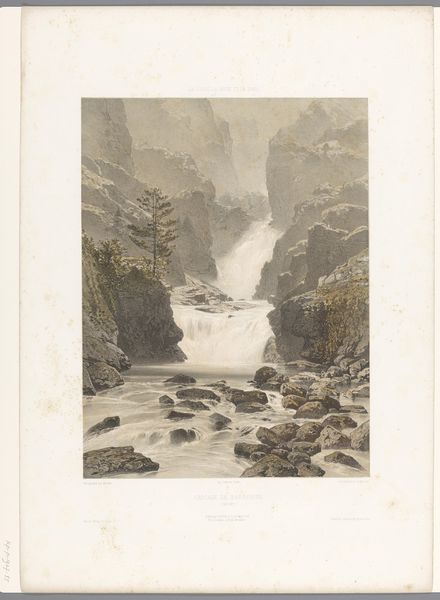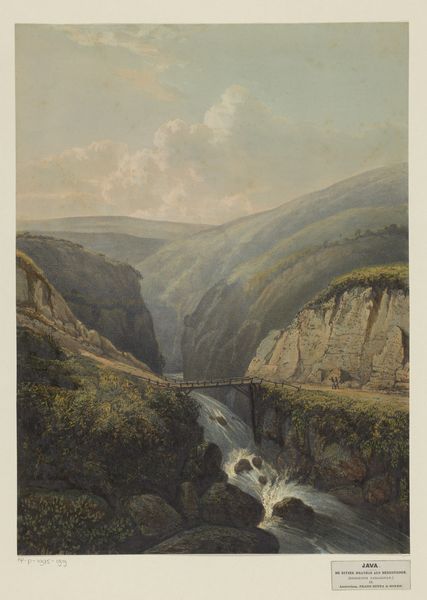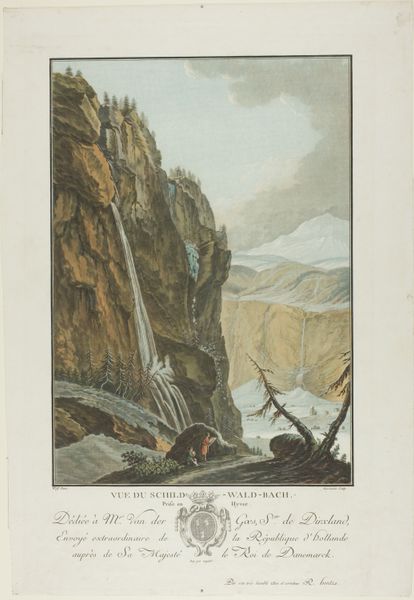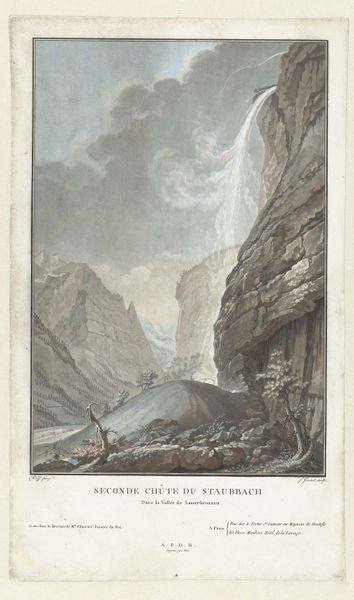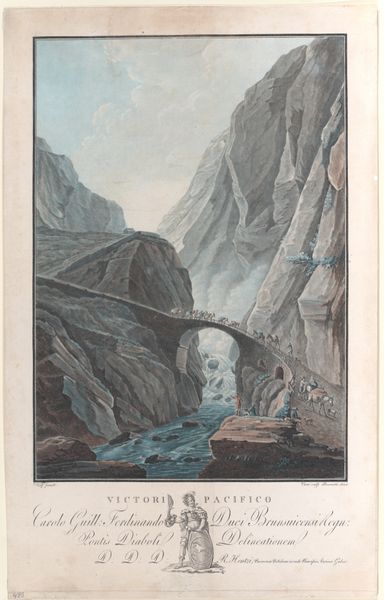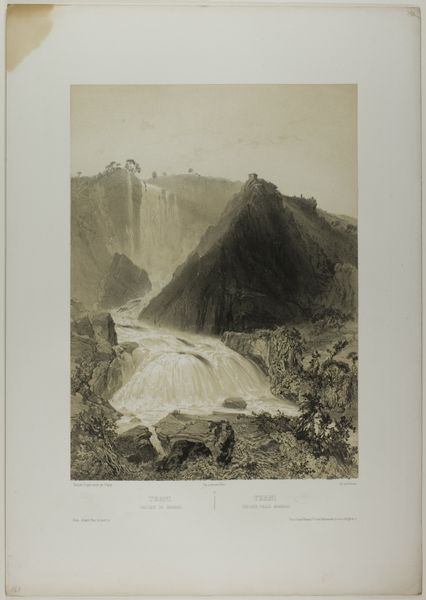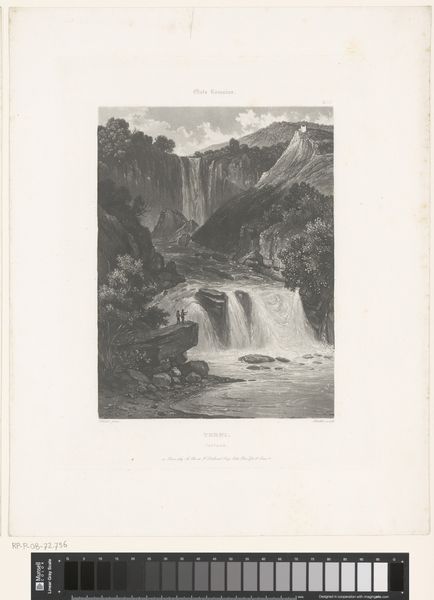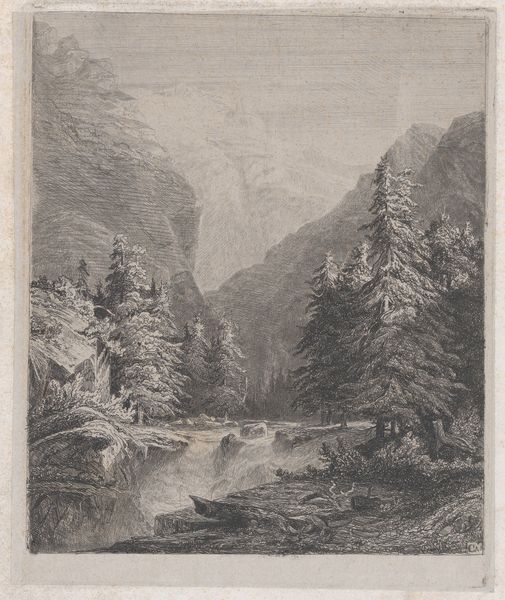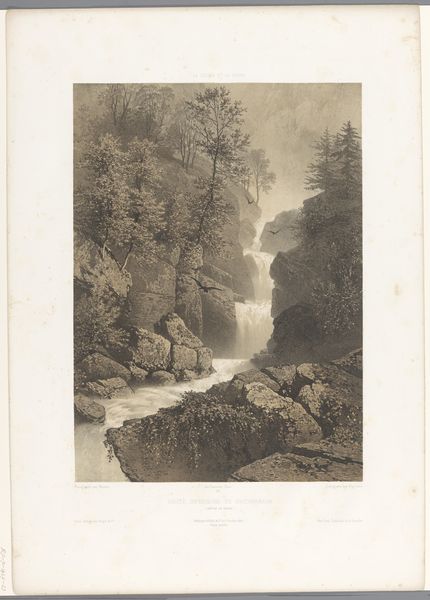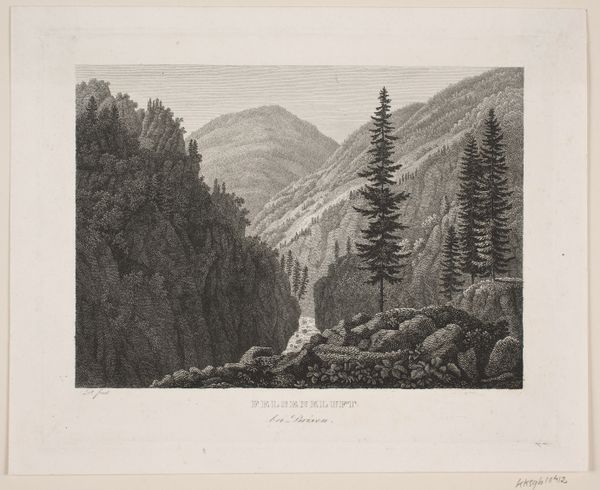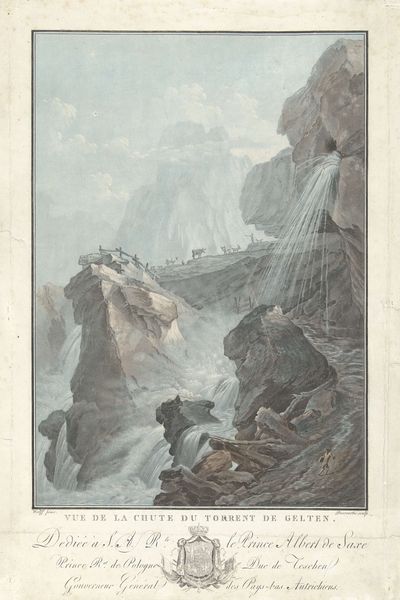
#
aged paper
#
toned paper
#
pencil sketch
#
waterfall
#
personal sketchbook
#
ink drawing experimentation
#
sketchbook drawing
#
watercolour illustration
#
sketchbook art
#
pencil art
#
watercolor
Dimensions: height 452 mm, width 320 mm
Copyright: Rijks Museum: Open Domain
Editor: This watercolor and pencil work, "Waterval van de rivier de Aare," made between 1763 and 1785 by Charles Melchior Descourtis, captures a rather dramatic waterfall scene. There’s something almost theatrical about the composition, the way the light hits the rocks and water. How do you interpret this work? Curator: What strikes me is how this image participates in the 18th-century aesthetic of the sublime, but also how it reinforces certain social dynamics. These kinds of dramatic landscapes became increasingly popular as subjects for art, reflecting a growing fascination with the power of nature. The question is, for whom was this power being represented and consumed? Editor: What do you mean? Curator: Well, consider who could afford to commission or collect such images. The dedication at the bottom tells us this was created for Monsieur George Craufurd, of the British Court in Versailles. Images of the sublime natural world often served as status symbols, reinforcing the commissioner's social standing and cosmopolitan sensibilities. Did Descourtis truly represent the awe-inspiring power of the waterfall, or package the notion for consumption by a wealthy patron? Editor: So it’s less about the waterfall itself and more about what owning its image represented? Curator: Precisely. It is a constructed view designed for a specific audience. These seemingly ‘natural’ depictions were highly curated, reflecting specific cultural values and reinforcing social hierarchies. Even the act of dedicating it underscores the patronage system so deeply embedded in the art world at the time. Editor: I never considered the social context in such detail before. This helps me see these landscape images in a completely different way now. Curator: Absolutely, viewing art through a socio-historical lens can radically change our perception of it, revealing the subtle power dynamics at play.
Comments
No comments
Be the first to comment and join the conversation on the ultimate creative platform.


